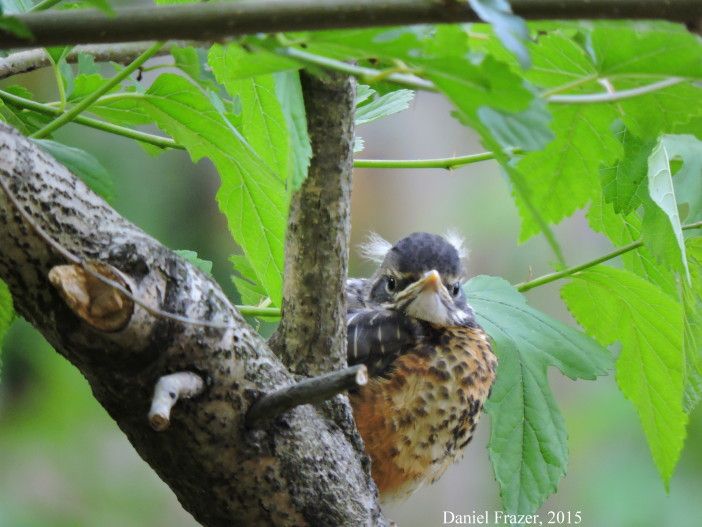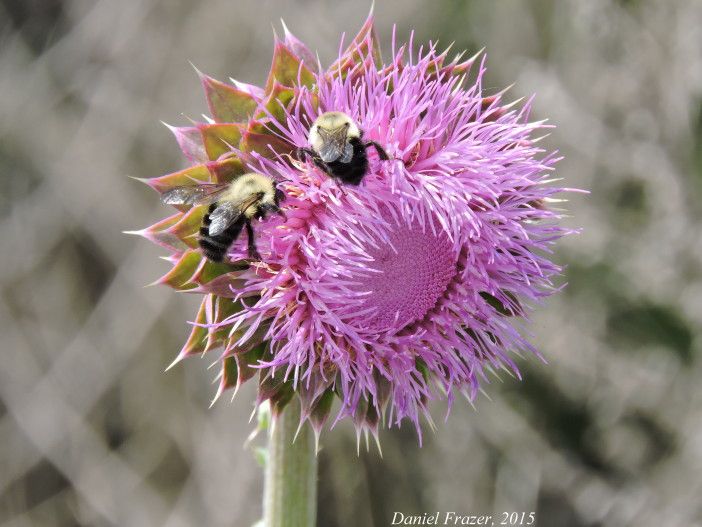What To Do When You Find A Baby Animal At Seth Low Park


Recently, I was taking a stroll around Seth Low Park, when a little girl came running toward her friend with an absolutely adorable baby squirrel in her hands. The baby squirrel, like many animals in New York City, was just starting to strut around the world to see what’s what. The little girl, however well meaning, was likely terrifying the poor little thing as it sat uncomfortably squirming in her hands.
Being the diligent and nervous naturalist that I am, I took the moment to explain when and how we know if a young animal needs our help. Luckily for me — and the squirrel — this little girl and her mother were receptive. This got me thinking: How many people know when an animal might need help or not? So often, well-meaning people kidnap young animals that are really best left on their own. If you find a baby bird or other animal, please remember the following:
1. Birds with their eyes open that have feathers and are actively trying to get away from you (also known as a fledgling), do NOT need your help! Birds are terrific parents and are perfectly aware where their kin may be hopping about. Even if you see a young bird crying with its mouth open, leave it alone! Occasionally, you may see a fledgling that is in a dangerous spot, such as a busy walkway or even in the street. If so, it is OK to scoop the baby bird up carefully (if you can!) and place him or her in the nearest tall grass or bush that you can find.

2. If you find a baby bird that is pink all over with little to no feathers, and its eyes appear closed or hardly open, first take a look around for a nest. If you do not see a nearby nest, it is best to transfer the baby into a small box with air holes, and immediately bring it to a wildlife rehabber such as the Sean Casey Animal Rescue or the Wild Bird Fund [WBF].
Please do not attempt to take care of any baby animal yourself! It is surprisingly difficult work that could easily wind up killing the poor baby. In some instances, it may even be illegal.
3. Baby mammals and native mammals in general are becoming increasingly common in our local parks and backyards. Just the other day, I had the great luck to see several young raccoons join their mother in raiding someones garbage can on Cropsey Avenue! In New York, we’re awfully unfamiliar with many of the common mammals that our friends and relatives may have in more suburban areas, and this puts our safety and the animals’ safety at even greater risk.
The little girl I met was lucky that the squirrel did not bite her, however, a squirrel can inflict a serious wound, especially to a child! While incredibly unlikely, a mammal may carry rabies or other diseases, so be sure to get to yourself to the nearest hospital or urgent care center should you be bitten.
4. Baby mammals are at a higher risk of being “kidnapped” because many find them so cute. There are very few instances where you may need to intervene when a young mammal is found. Should the baby not have fur yet, have closed eyes, and not be moving to evade you, move the baby to a dark, cool area, and contact one of the animal rescues mentioned above. The WBF takes all animals. Please be advised that veterinarians are not typically trained or equipped to deal with wild animals!
5. Turtles and frogs are making their way into our parks again! This time of the year, if you look closely at some of the fresh water ponds in our local parks (Calvert-Vaux Park mainly) you’ll notice tadpoles, frogs, and some very tiny adorable little turtles! Reptiles and amphibians do not need their parents and they are born knowing exactly what they have to do to survive. Turtles and frogs are a good sign that our environment is beginning to do better and it’s important to leave these important animals to do their work eating the many mosquitoes and other no-see-ums that give us painful bites in the summer.

6. And finally, let’s encourage our kids NOT to kill insects! Insects are an absolutely vital part of our environment that help pollinate flowers to give us fresh vegetables, provide food for the many animals that eat them, and even to serve as an indicator for how healthy the air we breathe is. So often, “celebrity” insects such as large caterpillars, moths, butterflies, and dragonflies are killed or captured because we think they look cool or we’re just grossed out by them! Did you know that the monarch butterfly is in great decline? If patterns exist, this beautiful insect may be nothing but a memory for generations to come.
Wherever we live, it’s important to remember that we’re part of an eco-system and that as humans, we have an even bigger role than other members of that eco-system because of how destructive mankind can be. Educate your children (and yourself!) on ways to observe nature without hurting nature so that their grandchildren can enjoy something as adorable as a baby rabbit or icky as a huge banana slug and have lasting memories too. What about creating a local nature scrapbook or photo-album? You’d be amazed how much you can see and find just walking around Southern Brooklyn!
Daniel Frazer is an amateur naturalist and birder born and raised in Southern Brooklyn. Daniel spends an inordinate amount of time birding around Brooklyn and is hoping to see every bird species this city has to offer. He write a “wildlife and nature” column for Bensonhurst Bean.




